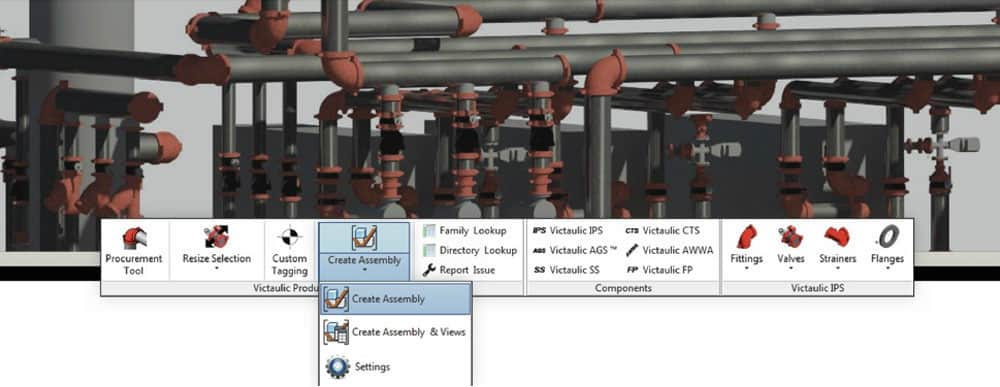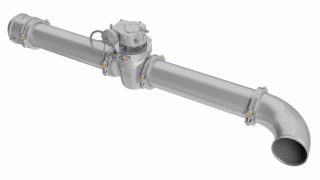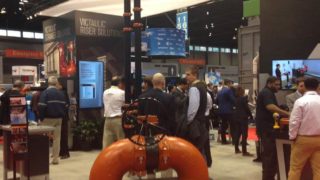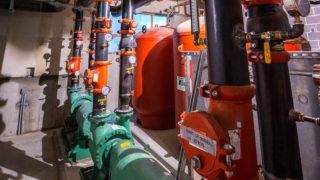Last Updated on May 30, 2018
Originally Posted on April 23, 2015
The Virtual Design and Construction (VDC) group at Victaulic is known for its industry-leading work drawing and coordinating projects for customers around the world. Engineers and contractors on projects of all sizes in markets ranging from HVAC to oil, gas and chemical turn to VDC for critical tasks like content development, 3D modeling, drawing services and prefabrication analysis to help their projects meet tight timelines more efficiently.
In those markets, VDC helps customers reduce or eliminate the pain points that add extra work for engineers and contractors alike. In the unique world of fire protection, VDC is playing an increasing role providing those same benefits. From converting project details into 3D modeling software, to spatial layouts, training and fabrication analysis, VDC is helping fire protection projects become “faster from the start” by making each of those steps as efficient as possible.
In this blog post, we’ll take a look at five of the most common pain points in a typical pump room project that reduce efficiency or create extra work and how Victaulic VDC can help prevent them.
Pain Point #1: Initial Pipe Routing in Revit
Revit is a 3D modeling tool for efficiently creating a complex pipe routing system. Widely used in other markets, it is still relatively new to fire protection. Engineers and contractors who are faced with using and learning Revit for the first time find themselves facing a steep learning curve that, if they don’t grasp it right away, can slow down their project.
VDC developed a variety of training options for customers to learn the benefits of Revit quickly. The one-day or three-day courses teach best practices and shortcuts for using the software along with the basics of setting preferences and installing the Victaulic add-ins to customizations like schedule, templates and revision control.
During the training, the benefits of using the intuitive Victaulic Tools for Revit over the native Revit tools become clear. Engineers see how it lets them design virtual, intelligent models with all of their pump room details in half the time. By using specially built add-ins from Victaulic, creating assemblies is a seamless process. Loose parts are never omitted, reducing the number of clicks and time necessary to model your equipment.
Training attendees also get a first look at the Victaulic Procurement Tool. The Procurement Tool allows customers to create fabrication spools and bills of material from within Revit in order to create fabrication drawings. This feature was previously not possible within the software and creates a seamless process without the need to engage a secondary software platform.
Pain Point #2: Converting project details into Revit
Even for engineers familiar with using Revit, converting the details of their project to a 3D model can be a daunting task. The Victaulic VDC is available to handle these detail conversions for you using details from the engineer’s initial model, further maximizing efficiency. Converting projects into Revit also streamlines the later stages of a project: The conversion contains all the specifications and product information, eliminating several pain points and confusion that could otherwise occur.
Pain Point #3: RFIs and change orders
Perhaps the biggest sources of inefficiency in any project are the RFIs and change orders that happen during the build out stage. They slow down the process for contractors who have to wait for the information to come in and the changes to take place. They also add work for engineers who are working on multiple projects and now have to re-visit their previous project.
Victaulic VDC helps customers eliminate these bottlenecks before they ever have the chance to happen by working with engineers to do the spatial planning and pump room design. With the details converted into Revit as mentioned above, VDC builds a “smart model” incorporating all the pump selections, safety factors and other room details. This will ensure the room has the right dimensions to accommodate the system without conflicts, greatly reducing the chances of RFIs and re-work later on.
For engineers, this means the project gets approved and off their hands faster so they can work on their next job. They don’t have to worry about the design coming back to them because of a design conflict; Revit catches and solves those during the modeling process. For contractors, fewer RFIs and change orders means their work goes more smoothly. The efficiency of using Revit and smart modeling at this beginning stage cascades through the rest of the project and makes everyone’s job easier.
Pain Point #4: The demands of BIM coordination
For customers that need more complete project management, the VDC also offers full BIM coordination for pump room projects. Contractors who choose this offering are still involved in the project but a dedicated Experienced Piping Coordinator from Victaulic will handle the project tasks according to the specs and guidelines of their BIM requirements. The Coordinators convert the details into Revit, coordinate with other trades, and provide you with construction ready drawings for your project.
Pain Point #5: Inefficiency during fabrication
After layouts and design documents have approval from the Fire Protection Engineer, there is still one part of the process where inefficiencies can appear: If the layout of the fabrication shop is not optimized for the job, it can lead to slowdowns.
To prevent this and help shops work the most efficient way possible, the VDC provides first-hand contractor expertise to its customers. Led by a former fire protection contractor, the VDC will review your fabrication process on-site and provide recommendations to further enhance your workflow and eliminate delays. This offering maximizes the pre-fab phase so when products are delivered to the job site they are fabricated properly and arrive within the schedule. the VDC can also help arrange bag-and-tag shipments and deliver sections pre-fabbed according to the installation schedule.
VDC experts also serve as LEAN advisors. Through a LEAN assessment, they are able to identify activities that fail to produce value and deliver a report on the best way to optimize the shop so it operates in the most efficient, productive way. When optimizations are carried through, a customer will find its fabrication shop operating at peak performance during slow times and when the workload is at its highest.
With the offerings available from the Victaulic Virtual Design and Construction group, fire protection engineers and contractors can experience projects that move more efficiently with fewer problems. From Revit training to spatial planning and fabrication, Victaulic can be a true and trusted partner on projects of all sizes, needs and budgets.
For more information, contact the Victaulic Virtual Design and Construction (VDC) team by emailing us at [email protected] or calling +1 610-923-3914 (US) / +3293811530 (Belgium).



